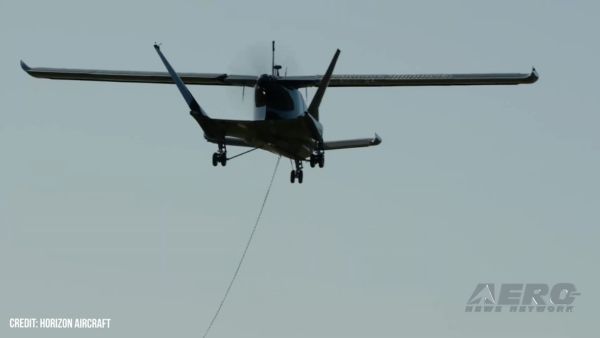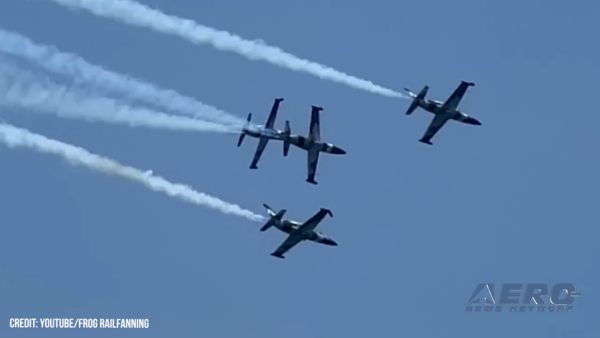After 62 Years, ‘new’ Civil Air Patrol Is Changing
With The Times
The Civil Air Patrol
says that it's alive and well and protecting the home skies -- just
as its members did on Dec. 1, 1941, when the organization first was
formed. The all-volunteer organization, which celebrates its 62nd
anniversary this week, was founded during World War II to protect
the U.S. coastline from enemy submarine attacks. Ironically, since
the Sept. 11, 2001 terrorist attacks, CAP members are finding
themselves performing homeland security missions once again.
During its early days, CAP’s civilian pilots also served
as couriers for U.S. defense plants and the U.S. Army, towed
targets for anti-aircraft, patrolled for spies and saboteurs, and
rushed medicines and supplies by air to disaster areas.
CAP also performed search and rescue missions, flew sentry over
Mexican borders and spotted forest fires, work for which the
organization is still known today. In 1948, CAP became the official
civilian auxiliary of the U.S. Air Force.
“Many baby boomers remember Civil Air Patrol from the
1950s and 60s, when America was concerned about nuclear weapons,
the Cold War and the Space Race,” said Maj. General Richard
Bowling, CAP national commander. “Back then we did a lot of
reconnaissance flying, trained a lot of cadets who were interested
in military service, and helped satisfy the public’s
insatiable fascination with aerospace. What people may not realize
is that CAP has continued to thrive as an organization. On any
given day, throughout this nation, there are CAP members quietly
doing volunteer work in their local communities.”
Today’s “new” Civil Air Patrol boasts some
64,000 members nationwide, including about 27,000 cadets ages 12 to
21. These volunteers give of their time and resources to perform
traditional CAP missions, including search and rescue, aerial
reconnaissance and air transport. Only a fraction of CAP
members are pilots, however. Many other members serve in less
visible ways. Some train and mentor cadets in moral leadership,
military customs and technical education. Others serve as chaplains
and can stand in for military chaplains who are deployed in times
of war or serve communities in critical incident stress management.
Still others work in public schools, leading classroom projects
that illustrate key principles in science and math.
And perhaps most
important in today’s Civil Air Patrol is the increased
emphasis on homeland security missions. Now under the oversight of
the U.S. Air Force Homeland Security Directorate, CAP members just
in the past year have participated in bioterror training exercises
such as Determined Promise and Falcon Virgo, flown reconnaissance
over key U.S. locations such as the 2002 Winter Olympics and the
launch site for the space shuttle Columbia and assisted in airborne
intercept training for the U.S. Air Force.
“We foresee even greater emphasis on homeland security
missions in future months,” Bowling said, “as CAP
develops its capabilities in this arena.” CAP is already
purchasing additional aircraft and equipment for homeland security
missions. Included among those purchases are roomier Cessna
Skylanes and Gippsland GA-8 Airvans, equipment for digital imaging
with satellite transmission, and hyperspectral imaging systems.
“This is an exciting time for CAP,” Bowling said.
“We bring to the table not only 62 years of experience and
service to America, but also the vision and energy of a new
generation of volunteers.”
CAP is a nonprofit organization. Its members perform 95% of
continental U.S. inland search and rescue missions as tasked by the
Air Force Rescue Coordination Center and during fiscal year 2003
saved more than 140 lives. Volunteers also perform homeland
security, disaster relief and counterdrug missions at the request
of federal, state and local agencies.
 ANN's Daily Aero-Term (05.16.24): Instrument Runway
ANN's Daily Aero-Term (05.16.24): Instrument Runway ANN's Daily Aero-Linx (05.16.24)
ANN's Daily Aero-Linx (05.16.24) Airborne 05.15.24: Ghost Sq MidAir, B-2 Junked, Dream Chaser Readies
Airborne 05.15.24: Ghost Sq MidAir, B-2 Junked, Dream Chaser Readies Airborne 05.10.24: Icon Auction, Drunk MedEvac Pilot, Bell ALFA
Airborne 05.10.24: Icon Auction, Drunk MedEvac Pilot, Bell ALFA Airborne Affordable Flyers 05.16.24: PRA Runway, Wag-Aero Sold, Young Eagles
Airborne Affordable Flyers 05.16.24: PRA Runway, Wag-Aero Sold, Young Eagles


